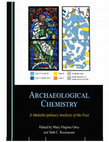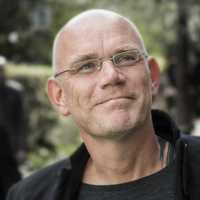Papers by Mariah A Postlewait

Photography and Culture: Psychosocial Aspects of Size and Impact
Recent anthropological theory suggests that miniatures have a powerful role in affecting human pe... more Recent anthropological theory suggests that miniatures have a powerful role in affecting human perception and identity formation. Likewise, photographs have long been acknowledged as having captivating power over the people who view them. Together, the photographic process amplifies the transformative power of the miniature. Miniatures are a universal presence in cultures around the globe. People are fascinated by tiny versions of larger objects. The effects of these small objects motivate, manipulate, and affect the people who view and interact with them. Using theories of miniaturization, object agency, and affect, an investigation of Lori Nix’s photography series The City reveals that photography has the power to augment this psychophysical phenomena. Nix crafts tiny miniature dioramas to form the sets of her photographs, depicting interior scenes of a destroyed city. With miniature objects, viewers can, through lived corporeal knowledge and experience, imagine what it would be like to hold, examine, and interact with the contents of Nix’s works. Viewers are able to draw comparisons with their own bodies, with their surroundings, and with life-size versions of the same types of objects in order to better explore and understand the works presented. As photographs, Lori Nix’s works remove viewers from the actual objects—able to see but not touch, interpret the miniatures’ actual size but not know for certain—and their processes of thought and investigation are disrupted by format. The objects within objects and worlds within worlds afforded by the works that comprise The City allow for new investigations of the power of photographs, miniatures, and photographed miniatures that affect the art world and the world at large. Analysis of these combined media (photography and miniature sculpture) reveals that specific actions/reactions can be anticipated purposefully elicited. Miniature and photograph work to affect viewers in previously unrealized, nuanced ways

The Hottentot Venus: Icon of Racial Objectification and Liberation
Sara Baartman grew up in South Africa in the late 18th century and earned the infamous title “The... more Sara Baartman grew up in South Africa in the late 18th century and earned the infamous title “The Hottentot Venus” for her “unusual” body proportions and forced participation in ethnographic displays in London. In death, various parts of Sara’s body, her genitals, brain, skeleton, and plaster body cast, were put on display in the Musee de l’Homme for nearly two hundred years until recent repatriation of her remains in 2002. The acts of racial subjugation and objectification that affected Sara Baartman and made her world-famous did not decide only her fate, but established a basis for the treatment of Africans. Black women fight centuries of ingrained negative views and attitudes towards female African sexuality and beauty. The evidence of this discrimination of women within the African Diaspora is laid bare through literary, theatrical, and visual artistic works. Through the same channels, reactions and desire for change emerge in the art of black female artists. This research explores the life of Sara Baartman, her antemortem and postmortem display, and analyzes the ways she impacts racial disparagement and racial liberation in relationship to black women, particularly within the realm of art
Miniatures Matter: Agency and Affect in Photographs by Lori Nix

Archaeological Chemistry: A Multidisciplinary Analysis of the Past. Edited by M. V. Orna and S. C. Rasmussen. Newcastle upon Tyne: Cambridge Scholars Publishing , 2020
Materials Matter, a new course at Binghamton University, draws chemistry and physics into convers... more Materials Matter, a new course at Binghamton University, draws chemistry and physics into conversation with archaeology, art history, and the history of science through an interdisciplinary focus on a particular class of materials—pigments. In its first iteration, co-taught by an archaeologist and a physicist, instruction focused upon all aspects of pigments, considering why pigments have color, their atomic bonding, ancient prices of pigments, and even how innovations in pigments influenced other industries, etc.
Class sessions stress humanities research methodologies alongside the quantitative and experimental methods of STEM fields, offering students early in their college career insights into processes and modes of research. Students made frescoes themselves to understand the chemical processes behind the creation of art, and made acrylic paints, while varying different additives, to understand the significance of each ingredient in the process. Students also learned how materials may be studied with experimental techniques such as x-ray fluorescence, x-ray diffraction, multispectral imaging, and electron microscopy, by analyzing pigments and artworks in Binghamton University’s Art Museum and in the Analytical and Diagnostics Laboratory.
This paper also highlights the work of the graphic designer who has been involved in planning this course from its inception. His work for Materials Matter is driven by the overarching goal of communicating complex chemical and physical processes by utilizing an integrative visual language. To this end, a graphical framework has been designed to bring into view all aspects of this course in a scalar manner, from the atomic level to the socio-cultural level, so that students can visually map the entire humanistic-scientific domain of one material as we focus upon it in different ways. An interactive student app is in development that integrates the various elements of this course using a scalar framework, in order to supplement lecture material and to provide interactive lab assignments.











Uploads
Papers by Mariah A Postlewait
Class sessions stress humanities research methodologies alongside the quantitative and experimental methods of STEM fields, offering students early in their college career insights into processes and modes of research. Students made frescoes themselves to understand the chemical processes behind the creation of art, and made acrylic paints, while varying different additives, to understand the significance of each ingredient in the process. Students also learned how materials may be studied with experimental techniques such as x-ray fluorescence, x-ray diffraction, multispectral imaging, and electron microscopy, by analyzing pigments and artworks in Binghamton University’s Art Museum and in the Analytical and Diagnostics Laboratory.
This paper also highlights the work of the graphic designer who has been involved in planning this course from its inception. His work for Materials Matter is driven by the overarching goal of communicating complex chemical and physical processes by utilizing an integrative visual language. To this end, a graphical framework has been designed to bring into view all aspects of this course in a scalar manner, from the atomic level to the socio-cultural level, so that students can visually map the entire humanistic-scientific domain of one material as we focus upon it in different ways. An interactive student app is in development that integrates the various elements of this course using a scalar framework, in order to supplement lecture material and to provide interactive lab assignments.
Class sessions stress humanities research methodologies alongside the quantitative and experimental methods of STEM fields, offering students early in their college career insights into processes and modes of research. Students made frescoes themselves to understand the chemical processes behind the creation of art, and made acrylic paints, while varying different additives, to understand the significance of each ingredient in the process. Students also learned how materials may be studied with experimental techniques such as x-ray fluorescence, x-ray diffraction, multispectral imaging, and electron microscopy, by analyzing pigments and artworks in Binghamton University’s Art Museum and in the Analytical and Diagnostics Laboratory.
This paper also highlights the work of the graphic designer who has been involved in planning this course from its inception. His work for Materials Matter is driven by the overarching goal of communicating complex chemical and physical processes by utilizing an integrative visual language. To this end, a graphical framework has been designed to bring into view all aspects of this course in a scalar manner, from the atomic level to the socio-cultural level, so that students can visually map the entire humanistic-scientific domain of one material as we focus upon it in different ways. An interactive student app is in development that integrates the various elements of this course using a scalar framework, in order to supplement lecture material and to provide interactive lab assignments.